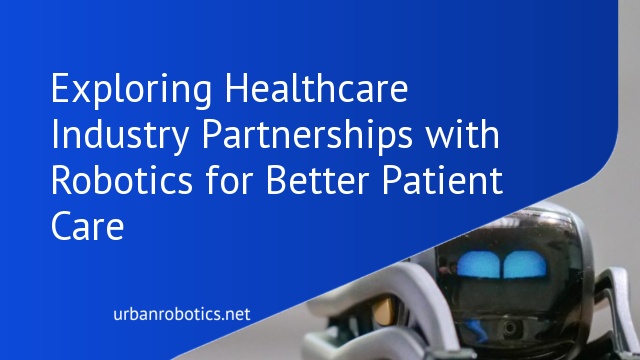The Evolution Of Robotics In Healthcare
Robotics in healthcare has evolved at a rapid pace, transforming from rudimentary tools in the 1980s to sophisticated systems today. In the early stages, simple robotic devices assisted in surgical procedures, enhancing precision but remaining relatively limited in function. Now, we see advanced robotic systems capable of performing intricate surgeries with minimal human intervention.
Robotic-assisted surgeries constitute a significant evolution. Systems like the da Vinci Surgical System have revolutionized procedures by providing enhanced dexterity, precision, and control. Surgeons use these systems to perform complex surgeries through small incisions, reducing patient recovery times and minimizing surgical risks.
Automated patient care marks another milestone. Robots like TUG, which transport medications and supplies, and companion robots, which assist elderly patients, demonstrate the broadening scope of robotics in healthcare. By automating routine tasks, these robots allow healthcare professionals to focus more on patient care.
Diagnostics and rehabilitation robotics have seen significant advancements too. Robots now aid in accurate diagnoses through imaging and lab work. Rehabilitation robots, like exoskeletons, support patient recovery, enhancing mobility and accelerating rehabilitation processes.
The continuous evolution of robotics in healthcare highlights a future where robotics will play an increasing role in improving patient care, efficiency, and overall health outcomes.
Benefits Of Robotics In Healthcare
Robotic technologies offer numerous advantages to the healthcare industry, transforming patient care and operational efficiency.
Improved Accuracy And Precision
Robotics enhance surgical precision, reducing errors and improving outcomes. For instance, the da Vinci Surgical System allows surgeons to perform delicate procedures with enhanced control. Automated systems in diagnostics improve the accuracy of tests such as blood analyses and radiology, ensuring reliable results.
Enhanced Patient Care And Recovery
Robotics improve patient care by enabling minimally invasive surgeries, which result in shorter recovery times. Automated rehabilitation systems assist patients with exercises, ensuring consistent therapy. In nursing, robotic aids assist with routine tasks, allowing healthcare professionals to focus on more critical patient needs.
Cost Efficiency And Savings
Robotic systems, while initially expensive, lead to long-term cost savings. Reduced procedure times and shorter hospital stays lower overall treatment costs. Efficiency in diagnostics and patient tracking minimizes errors, leading to fewer readmissions and optimized resource use.
Key Partnerships In The Healthcare Robotics Industry
Strategic partnerships between healthcare providers and robotics companies drive advancements in medical technology. Below are key collaboration examples.
Major Tech Companies Collaborating With Healthcare Providers
Prominent tech companies have joined forces with healthcare providers to push the boundaries of medical robotics. Google Health collaborates with Mayo Clinic on AI-driven diagnostics to enhance precision. IBM Watson partners with Cleveland Clinic to integrate cognitive computing in patient care. Microsoft integrates its Azure cloud platform with Novartis to streamline data management and enhance drug discovery. These partnerships illustrate the intersection of tech innovation and healthcare advancement.
Hospital And Robotics Manufacturer Alliances
Hospitals are teaming up with robotics manufacturers to enhance patient outcomes. Intuitive Surgical partners with John Hopkins Hospital to refine robotic surgery techniques using the da Vinci System. Medtronic collaborates with Mayo Clinic to develop robotic-assisted spinal surgery applications. Stanford Health Care works with Stryker on utilizing Mako robots for orthopedic procedures. These alliances bring cutting-edge robotic solutions to hospital settings, improving surgical precision and patient care efficiencies.
Challenges And Considerations
Healthcare industry partnerships with robotics come with several challenges and considerations. To ensure successful integration, we must address these key aspects.
Regulatory And Compliance Hurdles
Robotic systems in healthcare face strict regulatory and compliance requirements. Agencies like the FDA and EMA impose rigorous standards to ensure patient safety and device efficacy. For example, obtaining approval for the da Vinci Surgical System involves extensive clinical trials and data submission. Navigating these regulations requires significant time and resources, creating barriers for new robotic technologies. Compliance with data privacy laws, such as HIPAA, is also crucial to protect patient information within robotic systems.
Integration With Existing Systems
Seamless integration with existing hospital systems is essential for the successful deployment of robotics. Legacy systems in many hospitals pose compatibility challenges. For instance, robotic surgical tools must synchronize with current electronic health record (EHR) systems to update patient data in real-time. Technical teams must develop interfaces and data exchange protocols to enable smooth operation across different platforms. Addressing these integration issues helps maximize the potential benefits of robotic technologies in patient care.
Future Trends In Healthcare Robotics Partnerships
Healthcare robotics partnerships are poised to revolutionize patient care further in the coming years. New technologies and collaborative efforts will continue to push the boundaries of what’s possible in healthcare.
Innovations On The Horizon
We’re seeing promising innovations like robotic-assisted physical therapy and advanced AI-driven diagnostic tools. Wearable robots for rehabilitation, such as exoskeletons, are becoming more sophisticated, enhancing patient mobility. Collaborative robots, or “cobots,” are designed to work alongside healthcare professionals to perform tasks, thereby increasing efficiency and reducing human error. These advancements will continue to evolve as partnerships between healthcare providers and robotics companies grow stronger.
Potential Impact On Patient Outcomes
Improved robotics technologies are expected to significantly enhance patient outcomes. AI-integrated robots can offer more precise diagnostics, leading to earlier and more accurate disease detection. Robotic-assisted surgeries have already shown reduced recovery times and minimized surgical errors. We anticipate that as these technologies develop, patient recovery rates and overall treatment efficacy will improve further, contributing to better healthcare standards and patient satisfaction.
Conclusion
Our exploration of healthcare industry partnerships with robotics reveals a promising future for patient care. By embracing technological advancements, we’re witnessing significant improvements in diagnostics, surgical precision, and rehabilitation. Collaborations with tech giants and robotics manufacturers are pushing the boundaries of what’s possible in healthcare.
As we look ahead, the potential for AI-driven diagnostic tools, robotic-assisted therapies, and wearable rehabilitation devices is immense. These innovations promise to enhance patient outcomes, reduce recovery times, and elevate overall healthcare standards. The synergy between healthcare providers and robotics companies is set to redefine how we approach patient care, making it more efficient and effective.





